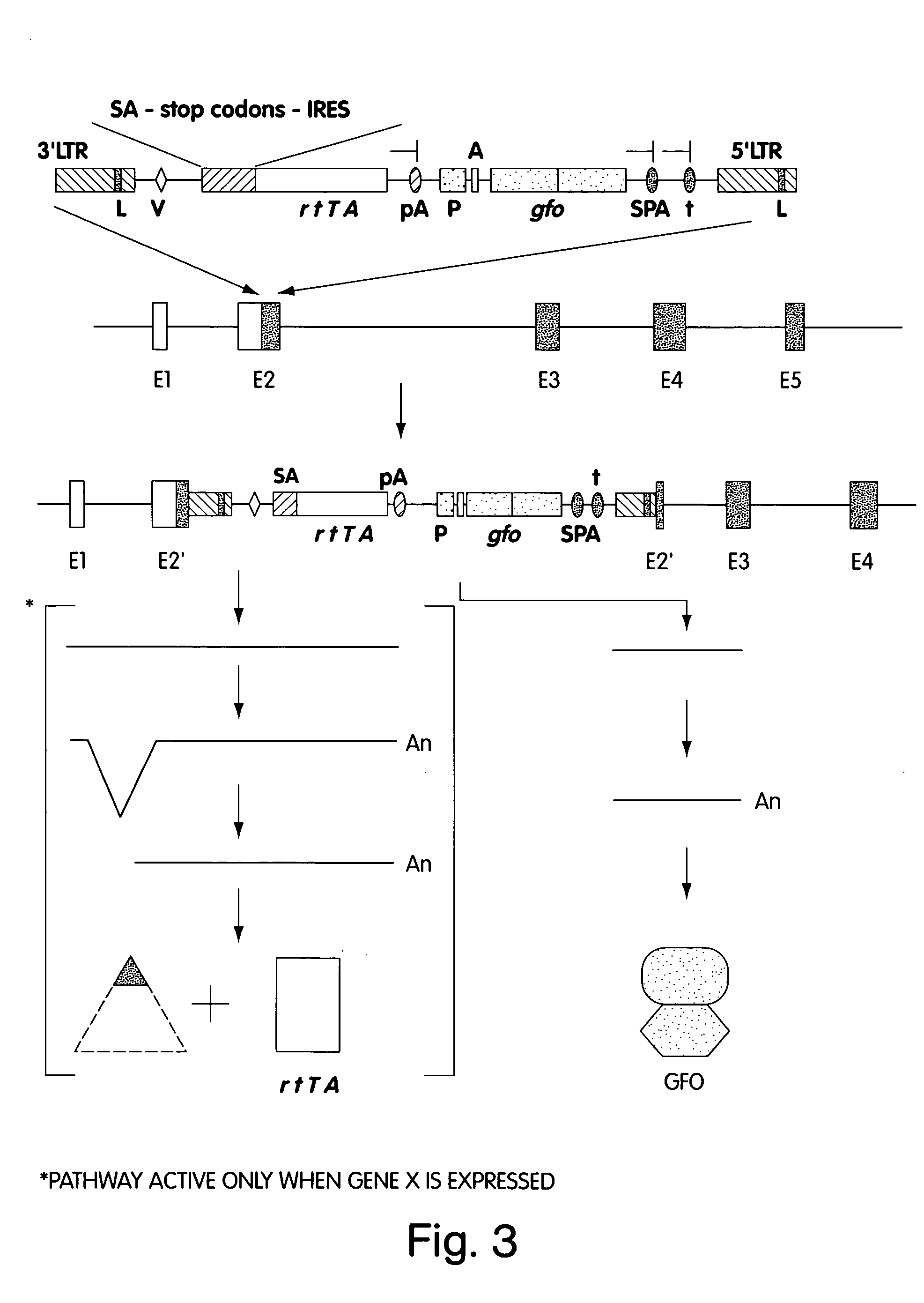Vectors and methods for the mutagenesis of mammalian genes
a gene and vector technology, applied in the field of retroviral vectors, can solve the problems of limited mouse mutagenesis methodologies, limited approaches, and limited information regarding the fraction of genomes that are expressed in particular cell types or cellular processes, and achieve the effect of increasing cellular fluorescen
- Summary
- Abstract
- Description
- Claims
- Application Information
AI Technical Summary
Benefits of technology
Problems solved by technology
Method used
Image
Examples
Embodiment Construction
[0024]The drawings will first briefly be described.
[0025]FIG. 1 is a schematic representation of a Moloney murine leukemia virus (MoMLV)-based vector for use in the MAGEKO process.
[0026]FIG. 2 is a schematic representation of an insertional mutagenesis event.
[0027]FIG. 3 is a schematic representation of the MAGEKO process of insertional mutagenesis in an exon sequence.
[0028]FIG. 4 is a schematic representation of the MAGEKO process of insertional mutagenesis in an intron sequence.
[0029]The present invention involves vectors and a process, termed “MAGEKO” (or “massively parallel gene knock out”) which permits the mutagenesis of large numbers of mammalian genes, the creation of libraries containing those mutant genes, and the ready selection from that library of stem cells carrying mutant genes of interest. Although this process is applicable to any mammalian system, it is now described for the generation of mutations and libraries in a mouse system. The following examples are present...
PUM
| Property | Measurement | Unit |
|---|---|---|
| green fluorescent | aaaaa | aaaaa |
| cellular fluorescence | aaaaa | aaaaa |
| genome size | aaaaa | aaaaa |
Abstract
Description
Claims
Application Information
 Login to View More
Login to View More - R&D
- Intellectual Property
- Life Sciences
- Materials
- Tech Scout
- Unparalleled Data Quality
- Higher Quality Content
- 60% Fewer Hallucinations
Browse by: Latest US Patents, China's latest patents, Technical Efficacy Thesaurus, Application Domain, Technology Topic, Popular Technical Reports.
© 2025 PatSnap. All rights reserved.Legal|Privacy policy|Modern Slavery Act Transparency Statement|Sitemap|About US| Contact US: help@patsnap.com



